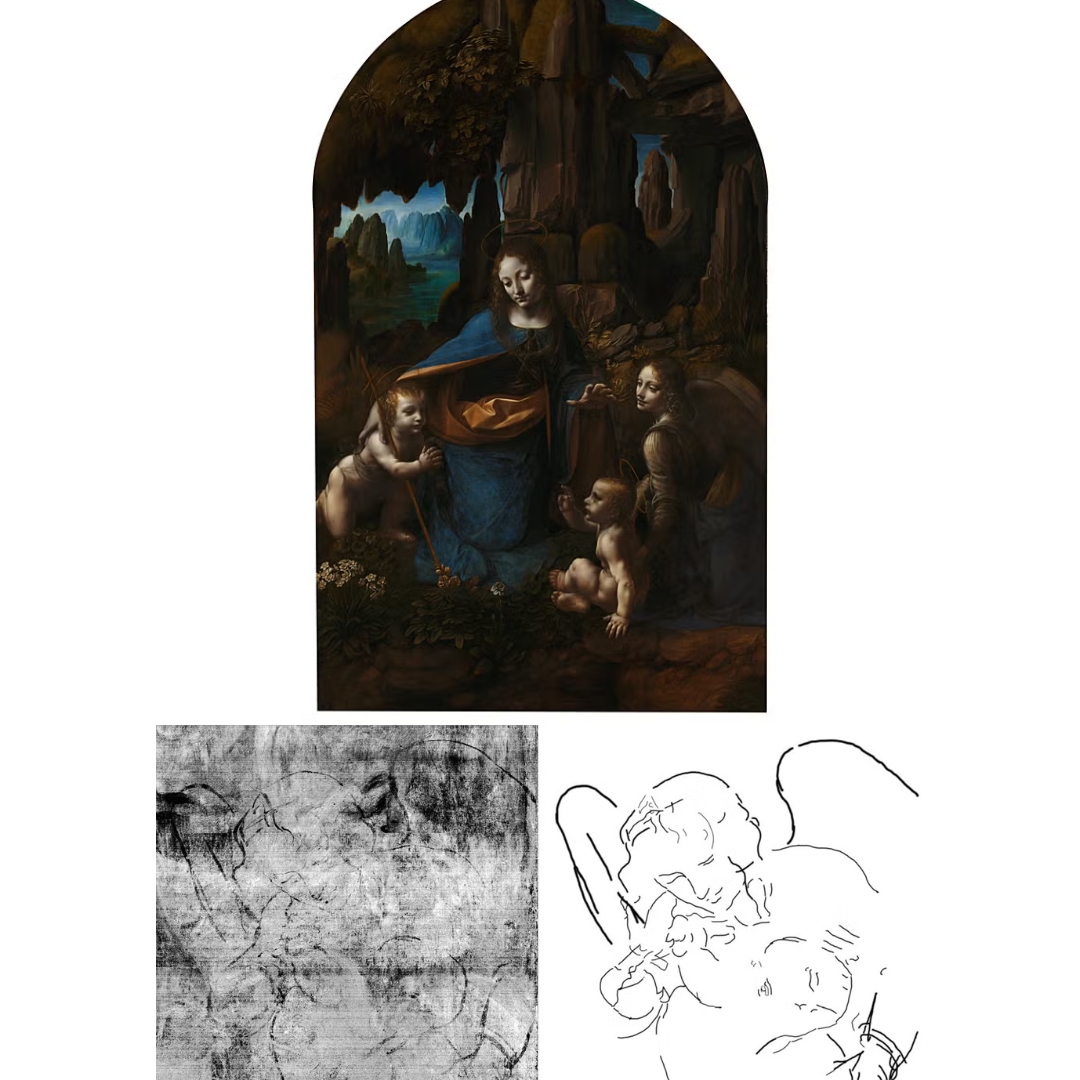In 2005, a team of scientists, conservators, and curators joined forces to study da Vinci’s The Virgin of the Rocks. The painting, originally commissioned for a church, is the second version of the work created by da Vinci, likely replacing an earlier one. Da Vinci felt the church wasn’t offering enough compensation for the second version, so he decided to sell it instead.
While it’s common for older art to be studied, scientists didn’t expect to find anything unusual when they examined the second Virgin of the Rocks. They anticipated an underdrawing, but thanks to infrared reflectography (IRR), they uncovered a hidden painting beneath the surface.
Surprised by their discovery, researchers contacted the now-defunct EU-ARTECH group for further analysis. Italian teams used high-resolution infrared scanners to confirm the hidden painting.
Thanks to advancements in technology, the National Gallery reports that “new imaging has revealed more details.” This includes Leonardo’s earlier design for the angel and baby Christ, which shows significant differences. In the original composition, both figures are positioned higher, with the angel looking down at the baby Christ in a much tighter embrace.
The reason da Vinci started a new painting and then reverted to his original idea remains unclear.
These scientific images suggest that Leonardo began a new composition but later returned to his original, possibly after resolving a disagreement. This second version isn’t just a copy; it features changes to the figures and new lighting effects influenced by his research into optics and human vision.
Art rarely follows a straight path. Though his thoughts are hard to pin down, the discovery highlights Leonardo’s restless creativity—constantly adjusting and seeking more.

